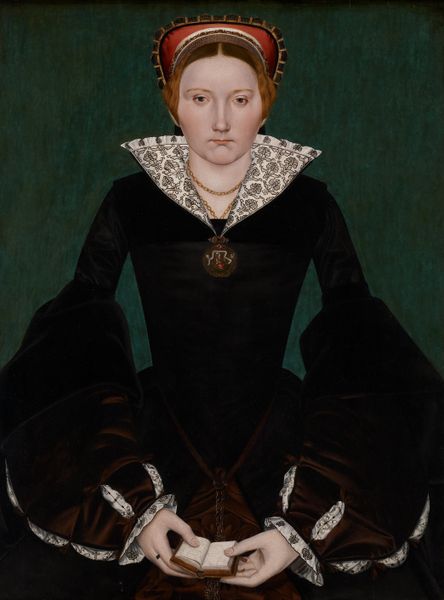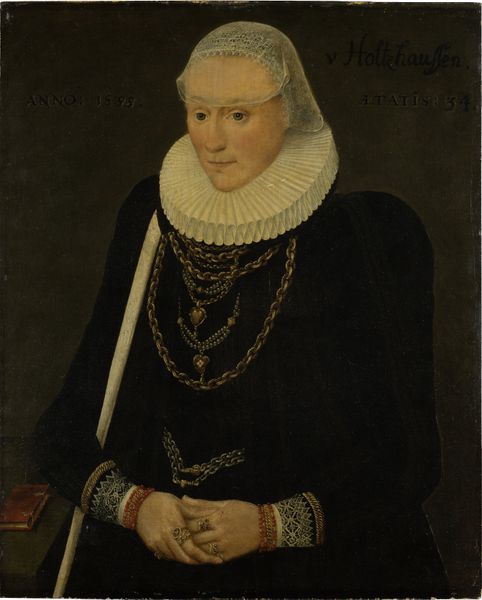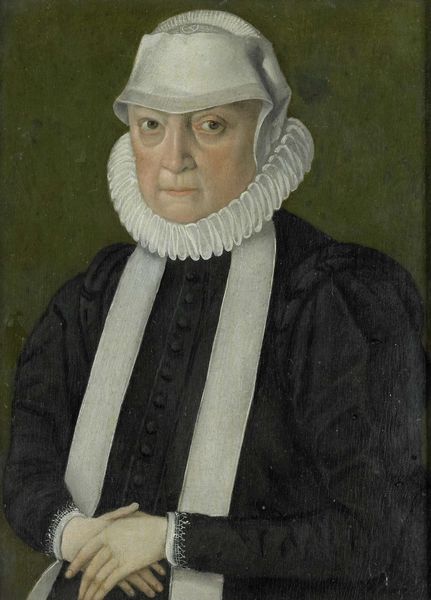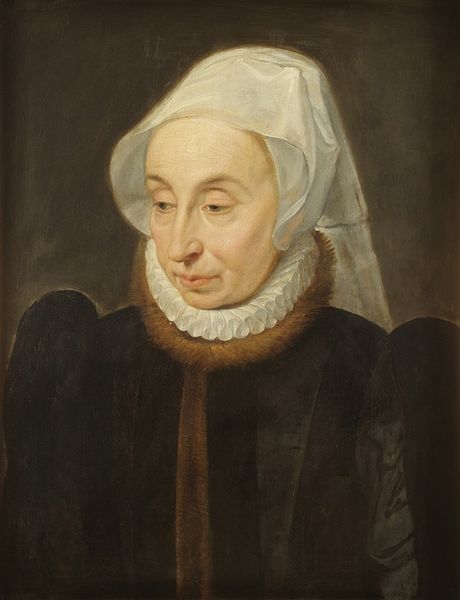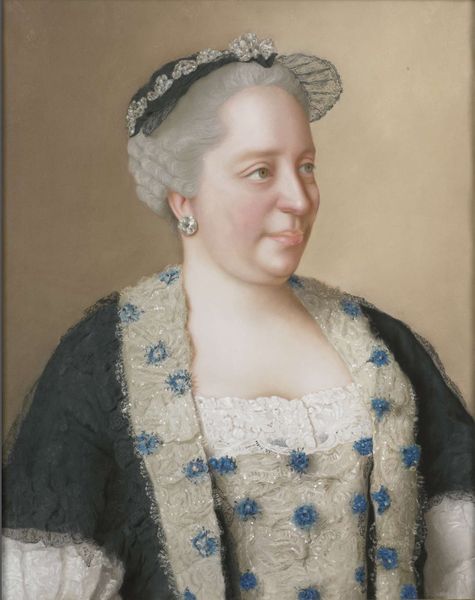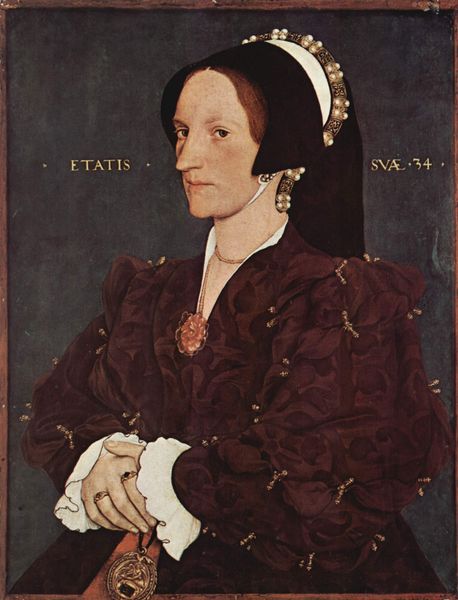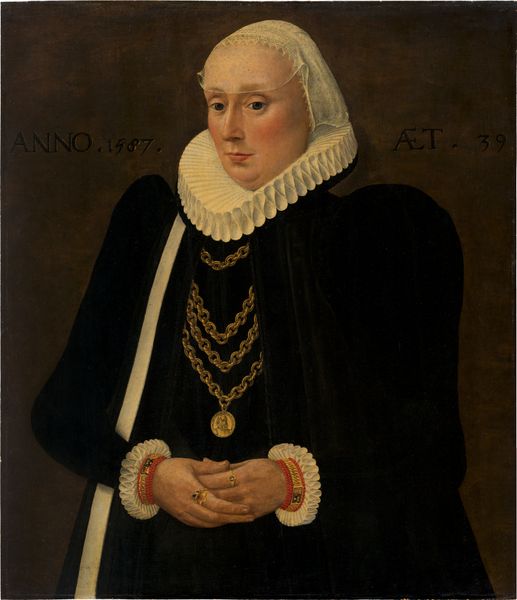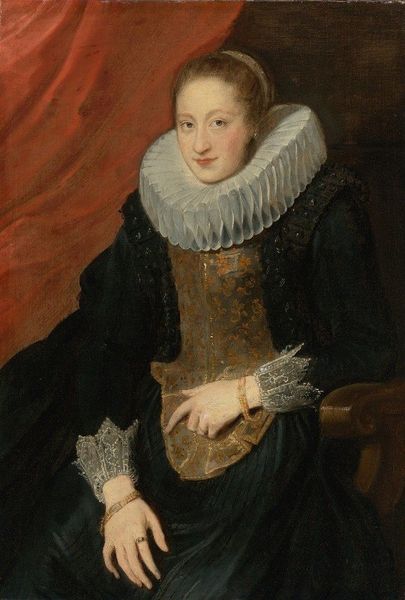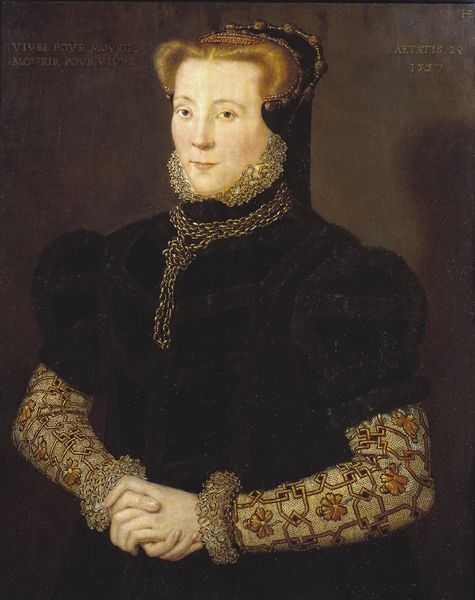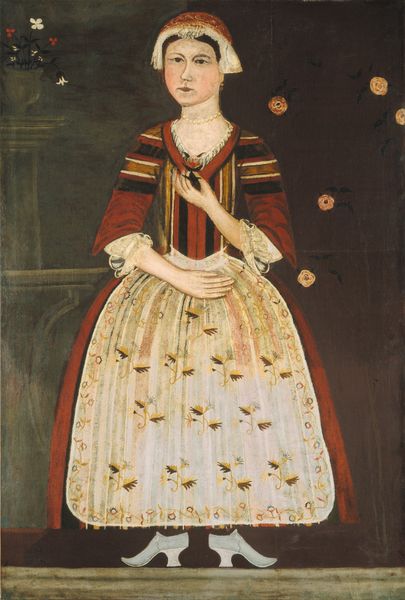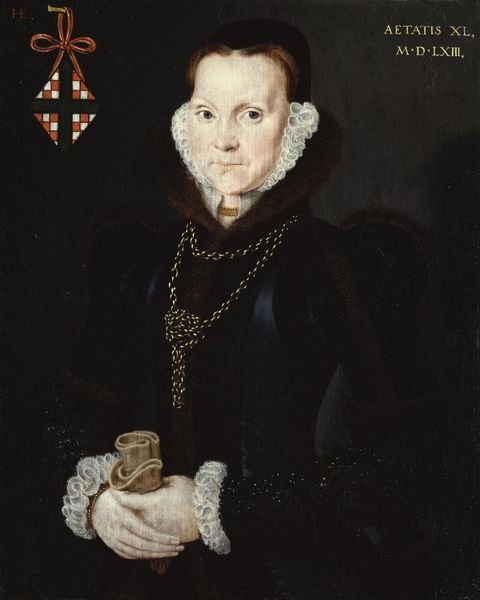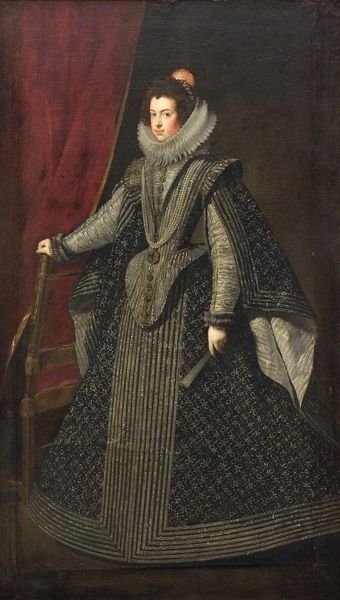
Dimensions: support: 743 x 464 mm
Copyright: CC-BY-NC-ND 4.0 DEED, Photo: Tate
Editor: So, here we have "Portrait of a Lady," by an anonymous British artist from the 16th century. I’m really struck by her intense stare. What stories do you think she could tell? Curator: Oh, she whispers secrets, doesn't she? I see a woman carefully constructed through fashion and pose. The Latin inscriptions, 'well adorned, not badly behaved,' and the little posy she holds—are they armor or a plea? Perhaps, both. Editor: Armor and a plea, I like that. So, what is she pleading for? Curator: Acknowledgment, perhaps? Or maybe just to be seen, truly seen, beyond the finery. What do you think those flowers symbolize for her? Editor: I hadn't thought of that! Maybe hope, or even resilience. This has completely changed my perspective. Curator: And that, my dear, is the magic of art. It begs us to look closer, doesn't it?
Comments
tate 7 months ago
⋮
http://www.tate.org.uk/art/artworks/british-school-16th-century-portrait-of-a-lady-n04811
Join the conversation
Join millions of artists and users on Artera today and experience the ultimate creative platform.
tate 7 months ago
⋮
The identity of the sitter is not known, although her many rings, her rich necklace and the costly gloves in her left hand show that she is of high rank. The artist's name is also unknown, although the initials 'FD', top right, may provide a clue. An x-ray study has shown that the artist made changes to the lady's dress and hat: in fact two different styles of cap lie beneath the present one. Perhaps a bereavement forced the lady to adopt mourning clothes during the course of the commission. The Latin inscription, possibly later in date, means 'A good character is a woman's fairest ornament'. The flowers in her right hand, held beneath her heart, may symbolise the transience of life. Gallery label, August 2004
